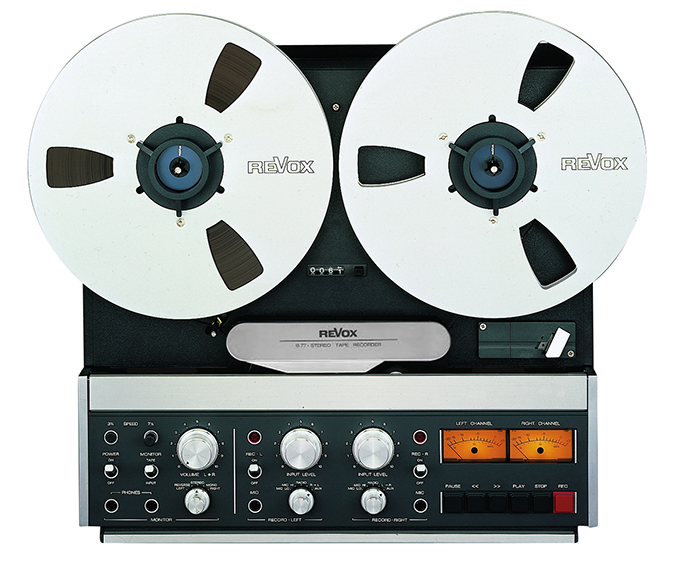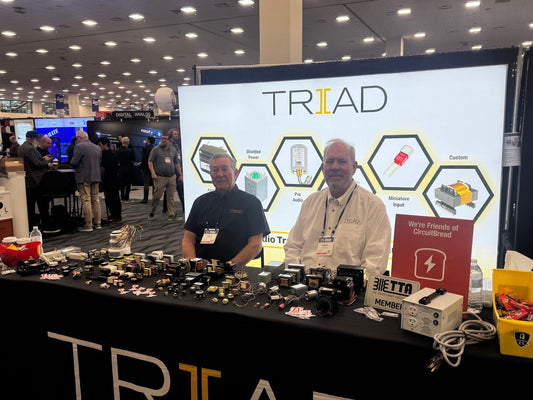In a previous article (published in Issue 209), I talked about my investigations into commercial four-track tapes. These tapes were released from the late 1950s through to the early 1980s, and I am particularly fond of the tapes released during the earlier period from 1958 to the early 1970s. The quality started to decline by the mid-70s, when the bean counters came to rule the roost at the major labels.
For those of us who are into vintage audio, these tapes are manna from heaven. Tapes released at least until the late 1960s were produced on an all-tube recording chain. For tube heads like me, what can be better than not having any solid -state device polluting the signal from the microphone all the way to our speakers? But this is not so easy to achieve in this day and age. There are plenty of new amplifiers available that are pure “vacuum state,” and even designs based on early Western Electric theater amplifiers for those card carrying Luddites.
But to find an open-reel tape machine that employs tube electronics, one would have to go to the flea markets and antique radio meets to try and score a sixty-year-old machine such as the Revox G36. And be advised that pretty much all the machines you can find will need major restoration work, and parts are hard to find. And the mechanics of these machines are not exactly state-of-the-art, but you might be lucky and they will only chew up your tapes once in a blue moon. The other option would be to find a tube tape head preamplifier. Currently there are several oddball manufacturers of such devices, with prices ranging from two to twenty-plus thousand dollars. I recently learned of a new product from Japan with a price tag of $75,000. I cannot imagine to what extent the sound of my Revox B77 will be transformed by such a wonder.
Marantz was the consummate high-end company of the vacuum tube hi-fi era, whose tube amplifiers, preamplifiers and crossovers are by now legendary. An original Marantz Model 7 preamplifier in good condition can fetch at least $5,000, 22 times its original price in 1958. The phono section makes use of three 12AX7 tubes, with equalization applied through negative feedback from the cathode follower output stage to the cathode of the input stage. This design is still widely copied and used in at least a few high-end products today. The Marantz 7 has a tape head input as well as several equalization curves for pre-RIAA records. Hearing a 1958 tape recording through the Marantz 7 would be to experience the state-of-the-art high fidelity sound of that era.
Viktor Khomenko, the designer and founder of Balanced Audio Technologies, has made a series of YouTube videos on the subject of tape recorders. They are highly informative, and you can search for his channel with the handle "Foxbat." He bought a Chinese-made circuit board based on the Marantz 7 phono section on eBay and built a tape head preamplifier for one of his machines, an endeavor that he considers very worthwhile. I found the same seller on Taobao, the Chinese version of AliExpress. For us DIYers, browsing through Taobao is like kids going to the candy store. You can find electronic components of all sorts; chassis, transformers, circuit boards and other things that you cannot even imagine. Here is China's industrial might at your service.
It just took me a few minutes to buy the board, already stuffed, plus a chassis and two power transformers. The total amount came to around $125, including shipping. Putting the preamplifier together was a piece of cake. I just needed to drill a few holes to bolt on the transformers and the standoffs for the board, and had to solder the power supply and signal wiring. The chassis is pre-designed for phono preamplifiers and has all the necessary holes for the sockets, power switch, etc. As I already have a stash of 12AX7s, I only needed to buy the required 6X4 rectifier.

The tape head preamplifier assembly.
The Revox B77 tape recorder does not come with a direct tape head output, unlike some other prosumer machines. This means I would have to do some rewiring. Conveniently, there is a hole in the chassis just to the left side of the headblock. This allowed me to install a 4-pole 2-position switch on the faceplate just in front of the hole, and thread the wires through this hole to get to the switch. I desoldered the wires from the playback head and attached them to one output of the switch. I then soldered short lengths of twisted wire-wrap wires from the head to the input of the switch. To get the signal into my preamp, I soldered Gotham GAC3 microphone cables to the other output of the switch. In this application, cable capacitance and noise immunity are equally important. The inductance of the head, together with the cable capacitance, form a resonance circuit. It is important to ensure the resonance frequency is well outside the audio band, otherwise it will need to be damped. These cables go through the hole for an unused socket on the connector panel at the back of the machine. A ground wire connects the head block to the ground post of the preamp.

Note the added (inconspicuous) toggle switch at the left.

The Revox B77 rear panel with wires for the tape head preamp routed through an unused connector hole.
The GAC3 cable has three conductors, of which I only use two. The cable shields are connected separately to the ground post of the preamp instead of going through the ground connection of the RCA plugs. This gives me the option of connecting the head to the balanced input of my other tape head preamplifier. Tape heads and phono cartridges are floating sources and can be connected balanced or single-ended, and I prefer balanced connection if available for the superior noise rejection.
This circuit board was meant for a phono preamplifier and therefore came with RIAA equalization. This has to be changed to NAB equalization, which is a simpler curve as it only has a low-pass and a high-pass filter. The low-pass is accomplished with a resistor in parallel with a capacitor, and the high-pass employs another resistor, this time in series with the capacitor. The values of the components can be calculated using the time constants of 3180µs and 50µs respectively. I installed trim pots in lieu of fixed resistors to allow for adjustments. The equalization is then adjusted with the aid of a reference tape to be within 0.5dB from 64Hz to 16kHz (+/- 1dB from 32Hz to 20kHz). The Revox heads are well-known for their linearity.
What about the sound? With the switch, I can go back and forth between the tube preamplifier and the upgraded internal electronics (which cost almost three times as much, by the way). The gain from the tube preamplifier is about 10 dB lower. The bass of the preamplifier is perhaps a shade less tight and impactful, but it excels in all other areas, especially the tone. The tone is what distinguishes a Stradivarius from a Guarneri, and is perhaps the most difficult area for an audio system to get right. It is the reason why some people love tube electronics and horn loudspeakers. The Marantz clone has a noticeably more saturated tonal color, making the internal solid-state electronics sound washed out, for want of a better term. In addition, the sound is more atmospheric, with more air around instruments, and there is a greater sense of depth. The sound is not smoothed out, as could happen with equipment of poor resolution. The brass fanfare at the opening of Solti's Mahler's Fifth Symphony did not lose its bite; neither did Janos Starker's bowing on the Dvorak Cello Concerto.
An external preamplifier has some inherent advantages over the internal electronics of tape machines. In most consumer and prosumer machines, the audio electronics share the same power supply with the motors and control electronics. These powerful motors are noisy beasts that require a lot of effort to slay. An independent power supply for the audio path solves this problem in one stroke. Moreover, an external preamplifier has less space constraint and hence more freedom to use the best components. The components that came with the board are of surprisingly high quality; some improvement can be gained by upgrading the coupling capacitors, increasing the filter capacitance, and perhaps installing a filter choke for the high voltage supply. For the tubes I am using vintage Tesla ECC803S, which are pre-selected low-noise 12AX7s. Would a more exotic tube such as the Telefunken ECC803S be even better? Maybe, but we are talking about tubes that cost an order of magnitude more than the preamplifier itself.
And if anyone just happens to own the new Japanese preamplifier, may I borrow it for an audition? I am dying to hear how much more $74,875 can achieve.
Header image: A Revox B77 tape deck (product image from the Revox.com/us website).



